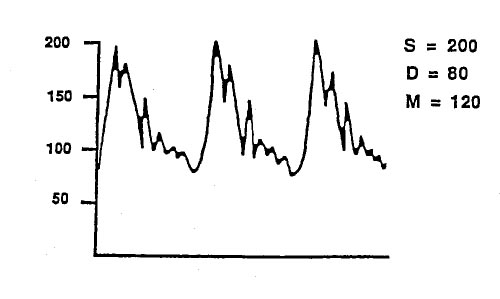10 Random Questions
Preoperative evaluation of a patient who has marked malnutrition will demonstrate each of the following EXCEPT
- (A) decreased respiratory muscle function
- (B) decreased serum albumin concentration
- (C) decreased metabolic rate
- (D) suppressed immune function
- (E) decreased extracellular fluid volume
The acute onset of hypotension without a decrease in mixed venous oxygen saturation is most likely associated with the onset of
- (A) hemorrhage
- (B) myocardial infarction
- (C) pulmonary edema
- (D) pulmonary embolus
- (E) sepsis
Which of the following findings is most likely in patients receiving intravenous milrinone?
- (A) Decreased left ventricular afterload
- (B) Decreased myocardial oxygen consumption
- (C) Increased atrioventricular conduction
- (D) Increased right ventricular preload
- (E) Stimulation of beta-adrenergic receptors
An acutely ill 65-year-old man with sepsis has severe hypophosphatemia. Which of the following is most likely to result from this electrolyte disorder?
- (A) Bronchospasm
- (B) Diarrhea
- (C) Muscle weakness
- (D) Seizures
- (E) Ventricular ectopy
Which of the following postoperative treatments decreases the risk for deep venous thrombosis?
- (A) Blood transfusion
- (B) Epidural anesthesia
- (C) Etomidate
- (D) Ketorolac
- (E) Patient-controlled analgesia
The condition LEAST likely to be associated with sustained pain relief following a nerve block is
- (A) causalgia
- (B) myofascial pain
- (C) diabetic neuropathy
- (D) acute herpes zoster
- (E) reflex sympathetic dystrophy
The tracing shown is from a femoral artery catheter. Which of the following is the most likely explanation?

- (A) An air bubble greater than 1 ml is in the tubing
- (B) The diastolic pressures is factitiously high
- (C) Mean blood pressure is inaccurate
- (D) The monitoring system is underdamped
- (E) Systolic pressure in the aortic arch exceeds 200 mmHg
The human immunodeficiency virus (HIV)
- (A) is inactivated by irradiation
- (B) is transmitted by cryoprecipitate
- (C) is transmitted by 5% albumin
- (D) passes through intact dermis
- (E) provokes an immediate antibody response
Each of the following is an effect of rapid infusion of mannitol EXCEPT
- (A) depletion of electrolytes
- (B) impaired platelet adhesiveness
- (C) increased intracranial pressure
- (D) increased intravascular fluid volume
- (E) increased renal blood flow
Which of the following correctly describes the anatomic location of the stellate ganglion?
- (A) Anterior to the transverse process of C5
- (B) Anterior to the transverse process of C7
- (C) Posterior to the prevertebral fascia
- (D) Posterior to the vertebral artery
- (E) Lateral to the carotid artery